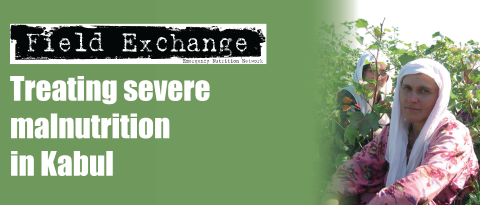The Changing Role of Aid Policy in Protracted Crises
Published paper1
A recent HPG research briefing paper provides an overview of the changing role of aid policy in protracted crises. It starts with the premise that there has been a significant shift in the 'linking relief and development' debate over the past decade and that there has been an expansion of interest by the development community in these environments which presents both opportunities and challenges for humanitarian action. On the one hand greater attention and resources may go to supporting the basic welfare needs of populations living in difficult environments who have historically not received a proportionate level of aid. On the other hand, as the aid landscape in crisis countries becomes increasingly crowded, it may be difficult (particularly for belligerents) to distinguish between the different forms of aid and security being offered by the international community.
The researchers argue that there is evidence suggesting that a shift in the policy environment has resulted in increased spending and activity by development aid actors in countries undergoing protracted crisis. The research looked at a group of 16 countries experiencing protracted crises in Africa, Asia, the Caucasus and Latin America and the Caribbean. In 2002, these 16 countries received $6.3 bn of ODA, the highest level they had ever received. In late 2003 the World Bank had over 80 projects totalling $5.5bn in 13 conflict-affected countries. This is nearly equivalent to the entire official humanitarian aid budget for 2001. The EU has disbursed high levels of development funds over the past decade in countries such as Afghanistan, Angola and Somalia. Commitments made at the Financing for Development conference in Mexico in 2002 together with programmes such as the Global Fund for AIDS, TB and Malaria mean that global development aid budgets could continue to grow significantly in those countries that are the primary concern of the humanitarian community.
The study states that "while acknowledging that there is little formally articulated policy, let alone consistently implemented approaches it is possible to identify some important implications arising out of the global trends in international aid in these new environments".
- Countries around the world are experiencing very diverse forms of protracted crisis and aid responses differ significantly between countries and over time. The emergence of debates regarding aid to 'poorly performing' countries has the potential to influence how aid resources are managed in these situations. However these debates remain at an early stage.
- There is scope for much greater understanding across the humanitarian and development communities regarding the determinants and dynamics of crisis, and how these impact on populations and societies. Incentives and the appropriate skills for developmental staff working in these difficult environments remain poor. Reviewing the incentives, career structure and skills mix would appear to be a common priority for both the relief and the development community.
- The trend towards deeper engagement by the development community in situations of protracted crisis is likely to continue. In situations other than those where there is a process of 'post'-conflict transition, the predominant form of aid is likely to remain grants, rather than loans; issues of public debt will remain difficult to manage and aid will remain highly projectised, rather than programmatic, in form. In other words aid engagement will remain 'relief-like'. However there is the potential for new actors, in particular the World Bank, to play an increasingly assertive role in the coordination of this aid, and in effect to serve a quasi-sovereign role in 'governing' resource mobilisation and disbursement and prioritising service delivery for welfare provision.
- While the utilisation of non-state actors has enabled significant increases in the capacity of the international community to disburse funds quickly, major questions remain regarding how and whether these mechanisms will link to efforts to re-establish state capacity for the financing and management of public services. Despite the increasing prevalence of weak state capacity and legitimacy, there remains significant resistance to addressing these problems strategically and systematically.
- There is considerable variation in what is feasible. The parameters of aid engagement are influenced by a range of bureaucratic and procedural issues, as well as by 'higher' politics. How humanitarian actors seek to engage with their developmental colleagues in responding to the securitisation of aid, and in providing aid in highrisk environments will be important.
1HPG (2004): Beyond the continuum. An overview of the changing role of aid policy in protracted crises. HPG Research Briefing, number 16, July 2004
Imported from FEX website


